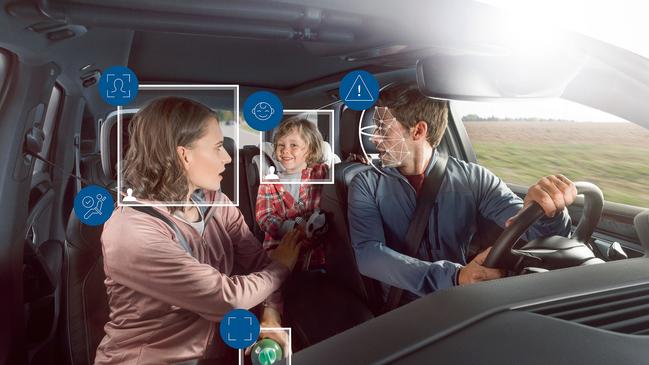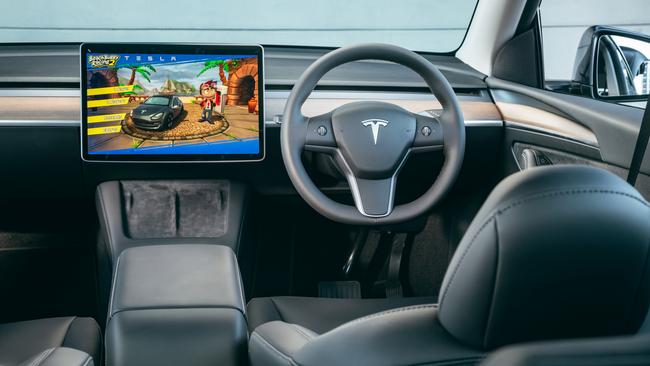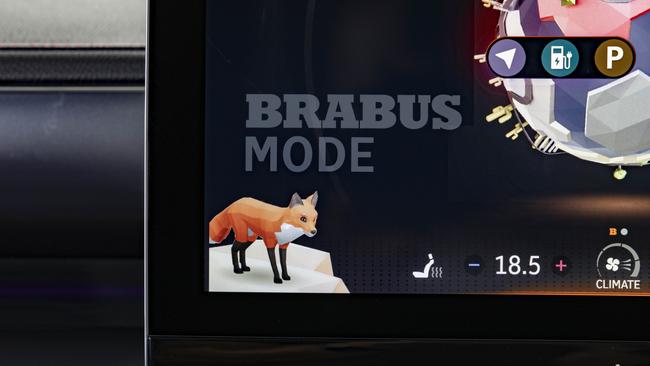The new way cars will cost you money
Manufacturers are set to monetise new cars with in-vehicle connectivity and advertising that could drive you crazy.
Motoring News
Don't miss out on the headlines from Motoring News. Followed categories will be added to My News.
The car of the future will use in-vehicle cameras to see who is on board, then use that information to introduce carefully curated ads in partnership with big business.
Expect it to suggest a stop for happy meals after picking up the kids from school, and to capitalise on “pester power” to convince people to spend money on games, apps and digital customisation of new vehicles.
Ford made headlines recently when it took out a patent for in-car advertising that included the ability to eavesdrop on passengers and tailor content to their conversations.
Including the ability to “understand the user’s tolerance for a particular advertisement’s count”, or in other words, listen out for people saying things like “if I hear one more ad for this petrol company, I’ll buy 10 litres from their arch rival and use it to set this car on fire!”
This isn’t fiction.

Tal Krzypow, a strategist at in-car tech company Cipia, told us that in-car camera systems, such as the driver distraction cameras that caused headaches for brands such as Mitsubishi, will almost certainly be used for commercial purposes.
“It converges very well with another trend, and that’s the one that we see among [manufacturers] who are looking for new revenue streams,” he said.
“Let’s say that right now you’re on a road trip from Sydney to Melbourne and you’re with the wife and kids.
“It can first of all personalise the experience, setting the right temperature level, because when you are with the kids the preferences change, right? It’s the same for the playlist.”
Yes, your car could automatically swap Rage Against the Machine for The Wiggles if little ears are on board.
Other elements might be more controversial.

“If it knows that it’s around noon time and you still have a long way to go, and one of your favourite restaurants is on the road, it can offer you actively, ‘Hey, do you want your favourite meal? and the kids?
“Do you need the rest room? Do you want to use facial recognition to authenticate the payment?
“All of a sudden you can bring into the cabin a host of services and products in context that truly add benefit, but that rely on the understanding and the context of what’s going on inside the cabin.
“It’s quite a while ahead, so we have time to prepare.”
In the same way that phones made the leap from simple devices for calls and text messages to digital machines home to dozens of paid apps, Krzypow says car companies are making the same leap.
Nissan is preparing to launch cars such as the new Patrol 4WD with Google operating systems that allow customers to use the Google Play store to buy apps.
The carmaker says it is a way to “ramp up investment opportunities” while improving customer engagement.

BMW customers can now play Uno card games in some models, as long as they pay $10 per month to subscribe to BMWs digital premium service.
That's the same amount Tesla charges for Premium Connectivity – which high then unlocks the ability to pay more again to subscribe to stuff like Spotify or Netflix in the car.
Mercedes has an excellence package that brings 22 extra features including vehicle tracking and the ability to send a temporary digital key to friends phones for about $500 per year.

We recently attended the launch of Smart in Australia.
Its cars have cute little animal avatars as digital assistants.
Overseas customers can pay to customise their animal – perhaps by choosing a different character, and even buying them pixelated accessories like cute hats – using real money.
It’s a lot like Fortnite or Roblox.

Smart designer Kai Seiber said the cars change between markets.
“In China they want a different animal every day, bit in Germany they say we don’t need this,” he said.
BMW’s X5 has clever multi-mode suspension built into the car.
But if you want to use it, you need to pay $29 per month or $290 per year in Australia.
Kia in the US limits the power of the new EV9 – to access the car’s full potential you have to pay about $1400 to access boost mode.
American website Motor Trend tested everything they could find in the Kia’s touchscreen, including boost mode, new patterns for complex exterior lights, and interior colour themes inspired by NBA.
It cost them $2700.
And this is just the beginning.
Originally published as The new way cars will cost you money



